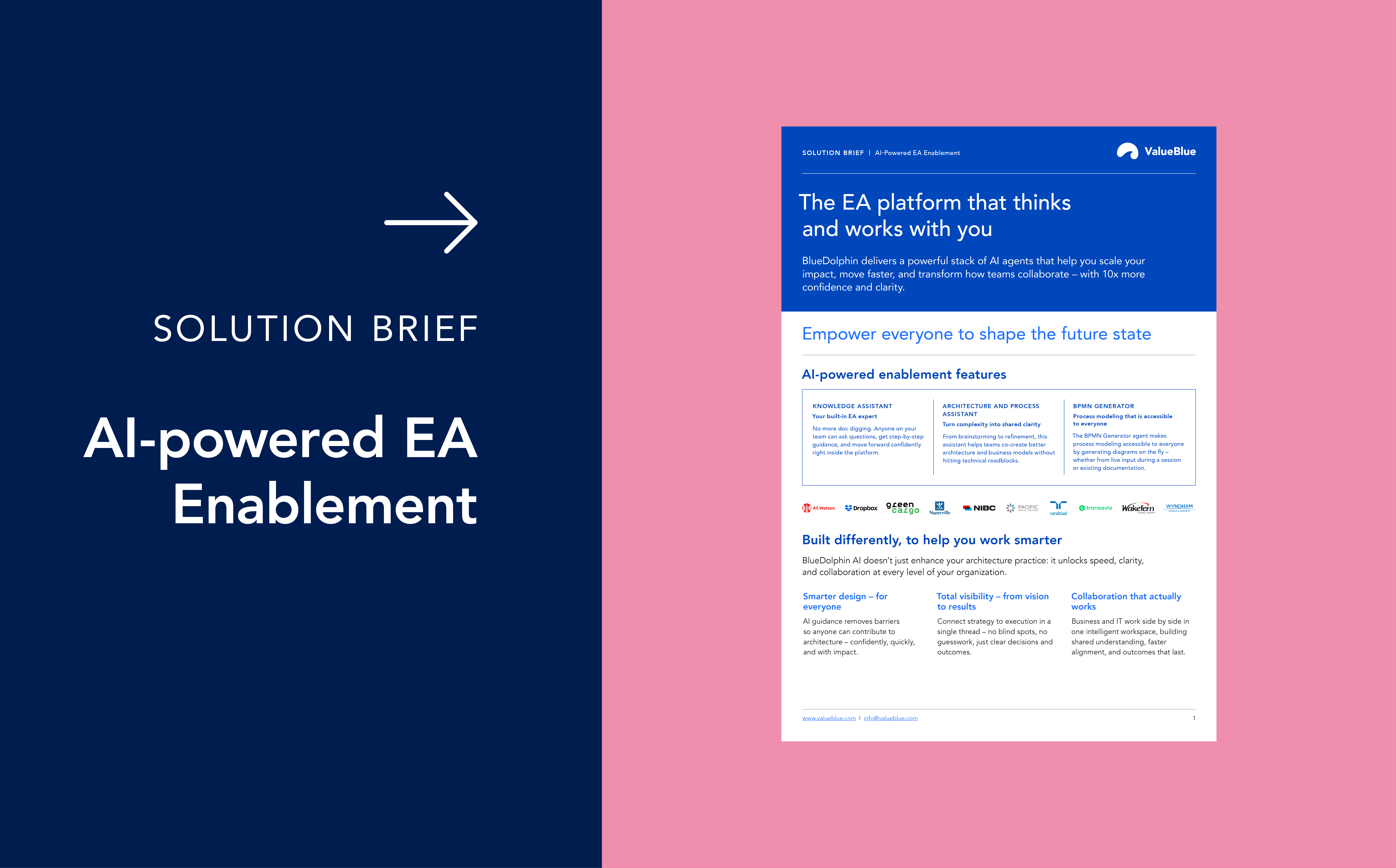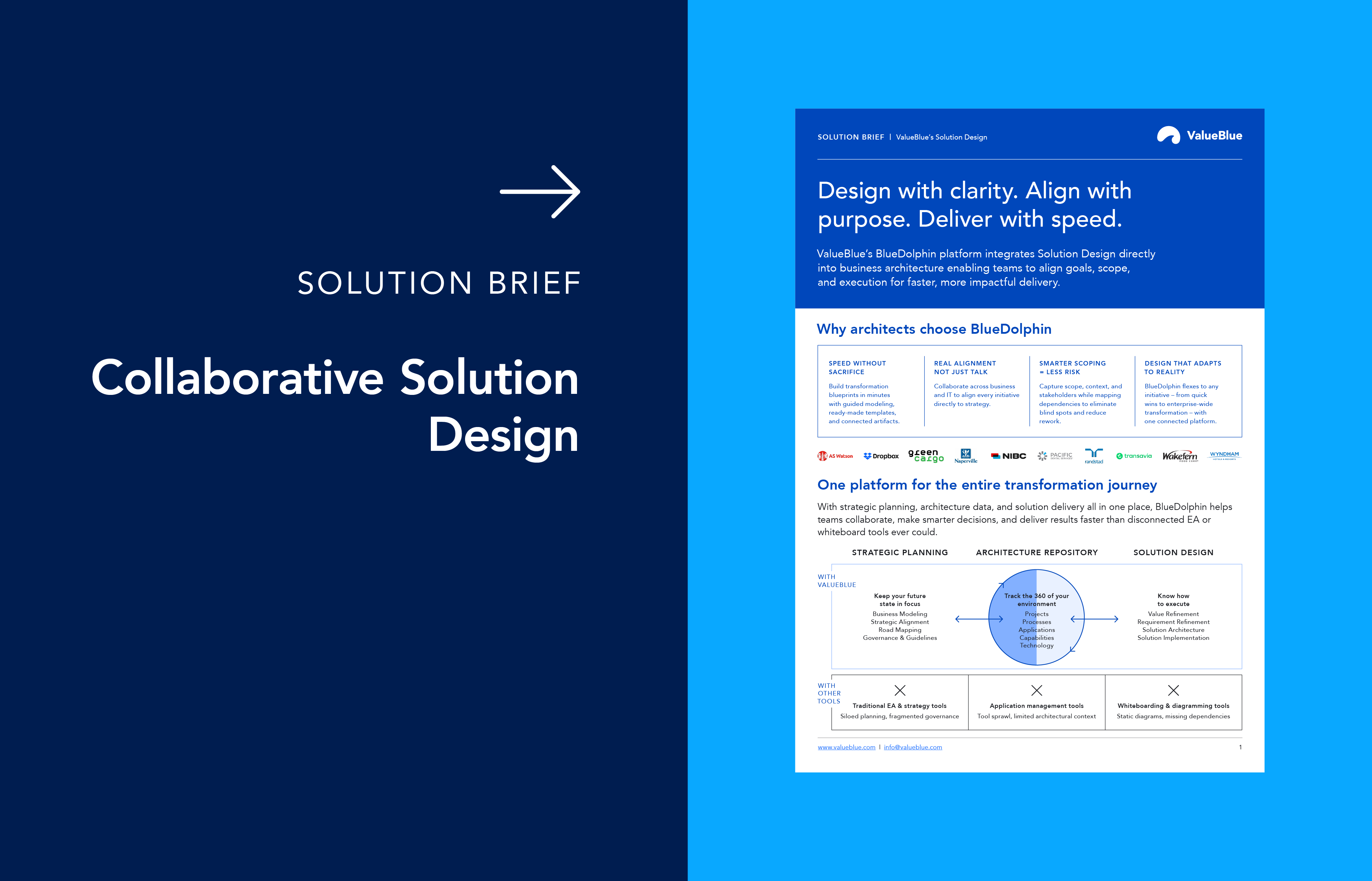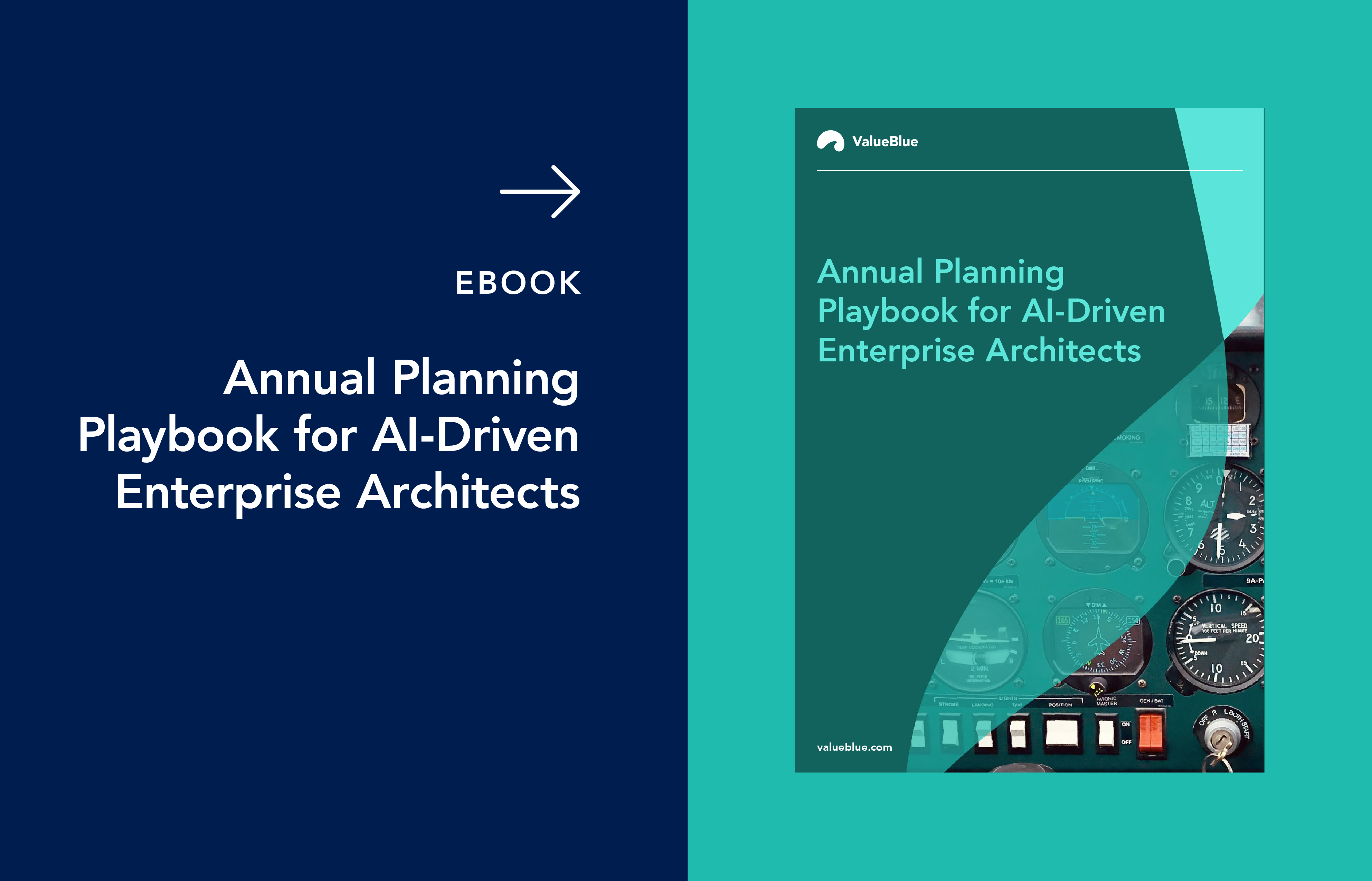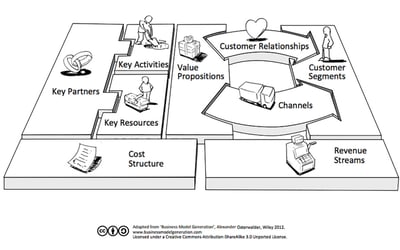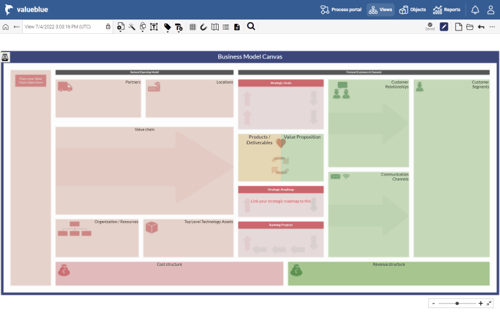Promoting Data-Driven Collaboration via Enhanced Business Model Canvas
At our flagship event, Transform 2022, Jelle Visser, CCO of ValueBlue, presented Collaboration Between Strategy, Architecture, and Execution MUST be Data-Driven. The presentation centers around creating an enhanced business model canvas and using that canvas to view key levers that enable successful business transformation and drive true business value.
But first, let’s take a step back and look at some of the numbers. We know transformation initiatives are fundamental for evolving an organization, but what level of impact are we actually talking about? Here’s the actual value, by the data:
-
$1.8 trillion is projected to be spent on digital transformation in 2022
-
If these transformation projects could be optimized by just 10%, the value delivered would be $180 billion
The Goal of Business Transformation
As you know, transformation is not a single project. As the market continues to evolve, organizations find themselves trying to deliver increased customer value, secure larger market share, and disrupt traditional business models. Transformation is at the core of these initiatives. Creating a cohesive and optimized portfolio of transformation projects should be front and center of leadership’s agenda, but too often long-term strategy is not aligned with mid-term transformation goals and teams break into siloes working towards different ends. For efficiency and effectiveness, everyone needs to be heading in the same direction toward the same goals. Yet, to reach that goal, everyone needs to understand the strategy.
Here are a couple of steps to get there:
-
Prioritize the business roadmap
-
Create a clear future state and business strategy to get there
-
Quantify the value of business cases on actual data
Every stakeholder needs visibility into the strategy. In his presentation, Jelle suggests combining a business model and operating model canvas into an enhanced business model canvas that offers a clear visualization of what actions need to be taken and what dependencies exist to deliver value to your customers. These models allow you to see tradeoffs and make truly data-driven decisions about your strategy.
What is The Business Model Canvas?
The Business Model Canvas (BMC), as developed by Alexander Osterwalder, takes nine critical elements of business design and puts them in a template where you can strategically create new – or document existing – business models based on those nine building blocks. In the BMC, key partnerships, key activities, key resources, cost structures, value propositions, customer relationships, channels, revenue streams, and customer segments all come together to demonstrate an organization’s value proposition and highlight potential trade-offs, as seen below.
Simply put, a Business Model Canvas is a visualization of how a company intends to turn a profit by identifying its customer base and how to deliver value to those customers while monitoring incurring costs.
What about the Operating Model Canvas?
Similarly, the Operating Model Canvas is a visualization of how to design operations in an organization to deliver your company’s value proposition to its customers. The Operating Model Canvas does this through the elements of “POLISM“ or value Processes, Organization, Location, Information, Suppliers, and Management systems. Running through the entire canvas, the work or processes that need to be done, or the value chain required to deliver value to the customer, can be found. The supplier box captures the support of the work steps in the value chain. Locations define where the work will be done. An organization captures the people and structure of the business. Information represents software applications needed to support the work of the value chain. The management system is for the planning and budgeting process to keep the operation running.
Operating Model Canvas
This model helps translate strategy into choices about operations and how to organize them. Meaning, it helps anyone from Enterprise Architects to business managers convert strategy into operational choices.
Combining to Create an Enhanced Business Model Canvas
The beauty of these two canvases is that they fit together perfectly to create a more holistic view of your organization. The key things you must know when building out your model are:
-
What is our product value?
-
How do we deliver these to our customers?
-
What are our cost and revenue streams?
Once these questions are answered, you can begin filling in the business model with some costs and revenue centers, customer segments, and how you plan to reach them. The next step is to fill in your products and value propositions. Lastly, fill in parts of your operating model, such as the value stream and business capabilities needed to execute that value stream.
This model helps translate strategy into choices about operations and how to organize them. Meaning, it helps anyone from Enterprise Architects to business managers convert strategy into operational choices.
The finished product should be a perfect blend of your front-end channels and the backend operations needed to deliver your product and value proposition.
Current State vs. Future State: Architecture Comparisons
One of the major benefits of using a tool like BlueDolphin to build your business model canvas is having the capability to compare your current and future state in one location. BlueDolphin also allows users to model in real-time using a continuously updated data repository. The end result is a view of your long-term goals as they relate to technology and everyday business value using the most accurate data.
Some example questions are: what new business capabilities are required to reach our goal? Do we need to build a new value stream altogether? What projects do we need to set up to realize this new capability?
Another reason for current vs. future state modeling is the ability to compare the benefits of optimizing a current capability vs. creating a new capability. This modeling allows stakeholders to make decisions based on data over speculation.
For instance, you can take the health (i.e., processes, applications, data, and technology) and maturity (i.e., have we mapped our business capabilities, and do we use proper documentation? What is the optimization potential?) of your current capability and optimize it within the model. What would this capability look like if we eliminated risk, optimized processes, or reduced cost?
The Business Value
From there, you can take the value associated with optimizing your existing capability and compare it to the costs associated with creating and optimizing a new capability. There are a couple of ways to make this comparison. Still, we find drafting the entire value chain and either comparing which option will generate the most immediate revenue, or what will generate the most revenue within a set time in the future are your best bets.
Showing the value each would generate if both were optimized makes it easier for the company as a whole to make a data-driven decision. This method, of course, is not an exact science, but rather a conversation starter around what things could look like in a future state.
Optimizing Transformation with your Enhanced Business Model Canvas
In this blog, we covered the importance of creating a business model canvas and tying it to your operating model canvas. Breaking these canvases down into business capabilities gives your architecture meaning and business value, which drives more effective collaboration with other parts of the organization. However, it is essential to remember these models are conversation starters. They are not meant to be the truth but an opportunity for buy-in and collaboration across the entire business.
If you enjoyed this topic, be sure to register for our webinar on December 1st, where Jelle will cover the enhanced business model canvas in more detail. Register now!
